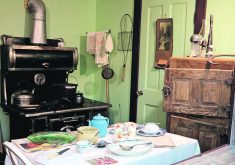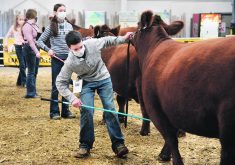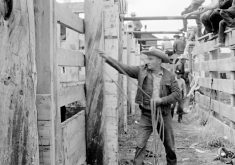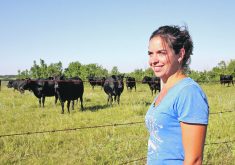The gradual changes that had started in the farm population in the 1950s accelerated in the 1960s.
Farms and the equipment were getting larger and developments in fertilizers, herbicides and new plant varieties increased productivity. Farm youth obtained post-secondary education and were seeking employment away from the farm. A trend toward specialization reduced the number of traditional self-sufficient farming operations, and many farmers were moving to town to be closer to schools, shopping and jobs with a steady paycheque.
There were almost 139,000 farms in Saskatchewan in 1941, averaging 432 acres. In 1966, there were only 79,366 with an average of 807 acres.
This depopulation caused fundamental changes in the small towns that had serviced these disappearing farms as well as in rural society.
Organizations such as the Homemakers, now called the Women’s Institutes, that had for so long provided an educational and social outlet for rural women as well as leadership and support for their communities, were finding their numbers declining.
Until the 1960s, spring wheat, barley, oats and tame hay accounted for most of the cropland on the Canadian Prairies.

But now agricultural diversification was being encouraged, and research began to focus on finding other crops that would grow on the Prairies. In the early 1960s, durum production dramatically increased.
The production of rapeseed, which had been grown for use as an industrial lubricant, was declining. During the 1960s, Canadian researchers Baldur Stefansson from the University of Manitoba and Keith Downey from Agriculture Canada’s research station in Saskatoon jointly developed the first low erucic acid and low glucosinolate rapeseed through traditional cross-breeding experiments using seeds from plants low in these two components.
The results were unique varieties that yielded food-grade oil. In 1978, the name canola (an abbreviation of “Canadian oil”) was officially registered to define rapeseed varieties with less than two percent erucic acid in the oil and low glucosinolate levels in the meal. A large international market opened for farmers for the prairie-developed crop.
The opportunity for developing irrigated crops was part of the considerations in building the Gardiner Dam on the South Saskatchewan River and the Qu’Appelle River Dam across the Qu’Appelle River, which created Lake Diefenbaker in west-central Saskatchewan. Construction began in 1959 and the lake was filled in 1967. Power generation, water supply and recreational opportunities were also part of the plan.
The prairie economy, which had been so dependent on agriculture, was diversifying with the discovery and development of oil, potash, uranium and other minerals. These industries provided new employment opportunities, and farm youth were valued by these employers for their work ethic, general knowledge and problem-solving skills.
Rural 4-H clubs had provided excellent training for farm youth in organization, public speaking and leadership skills that served them well at university and in their careers.
In January 1960, Jean Murray spoke at the University of Saskatchewan’s annual Farm and Home Week, stating the university was “planning a five-year $14 million expansion” to meet the rapidly growing student enrolment by building more student accommodations and adding additional space for many of the departments. During the 1960s, both Calgary and Regina opened new universities to meet the growing demand for education.

Canada’s first western Canadian veterinary medical college was officially opened July 2, 1969, at the U of S.
Saskatchewan premier Ross Thatcher said in his remarks that the college is “absolutely necessary for the future economic development of Saskatchewan.” He added that “western agriculture is in a time of crisis” and “in their own interest our farmers have no choice but to diversify into poultry and livestock production.”
The college came into existence through the co-ordination and co-operation of the four western provinces.
The on-going concerns about health-care costs and accessibility took a giant leap in 1962 when the Saskatchewan government implemented the first government-controlled, universal, comprehensive single-payer medical insurance plan in North America called Medicare. Within 10 years the entire country was covered by Medicare.
Rural housing was continuing to be upgraded with intensive provincial programs to install sewer and water systems. More new houses were being built on farms and in communities to meet the demand for modernization and convenience.
The federal government recognized an increasing need for rental housing for elderly people and families with low income. A Feb. 7, 1963, article announced an innovative housing program that encouraged civic authorities, service clubs and other groups interested in building, holding and managing low-rental housing projects to apply for loans through the Central Mortgage and Housing Corporation.
An article in the May 11, 1967, Western Producer by Keith Dryden described how students at universities across Canada were forming housing co-operatives to help meet the need for housing.
Manufacturers were producing a plethora of new, well-made, labour-saving devices and appliances for the home. New textiles and textile treatments were being developed that produced easier to care for and clean fabrics for clothing, household furnishings and flooring. With more items to purchase and an increased purchasing power, the era of the consumer was born.
During the 1960s women were looking at their roles in society. By 1965, people were marrying at a later age and were waiting longer to have children, partly because more women were entering the workforce and partly because of greater access to better methods of birth control.
The Royal Commission on the Status of Women in Canada was created in 1967 with the mandate to “inquire into and report upon the status of women in Canada and to recommend what steps might be taken by the federal government to ensure equal opportunities for women in all aspects of the Canadian society.”
On Dec. 7, 1970, the final report included 167 recommendations to reduce gender inequality across Canada.
There were increasing concerns about safety as farm, water and electrical accidents and deaths increased. A Feb. 7, 1963, article reported that there were 1,253 highway accident deaths in Saskatchewan from 1951-53.
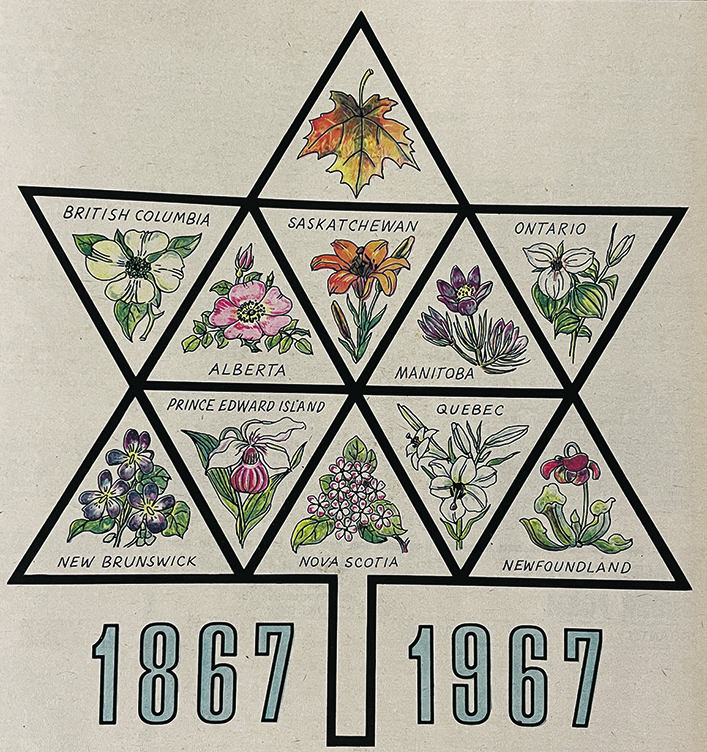
The Saskatchewan Safety Council suggested that the rapid increase of new machines, techniques and pesticides on farms made it difficult for farmers and their families to learn how to use them safely. Tractor accidents were the most frequent cause of farm fatalities, and the council recommended the use of roll bars on all tractors.
In 1967 Canada held a year-long party as the country celebrated 100 years since confederation. Many community groups, individuals and communities developed Centennial Projects to celebrate, ranging from statues, new community centres, quilts and history and cookbooks.
The place to travel to was Expo ’67, the world’s fair in Montreal.
Betty Ann Deobald, one of The Western Producer’s TEAM Resources columnists, will write a monthly column for the next year examining rural life in each decade of the last century.







